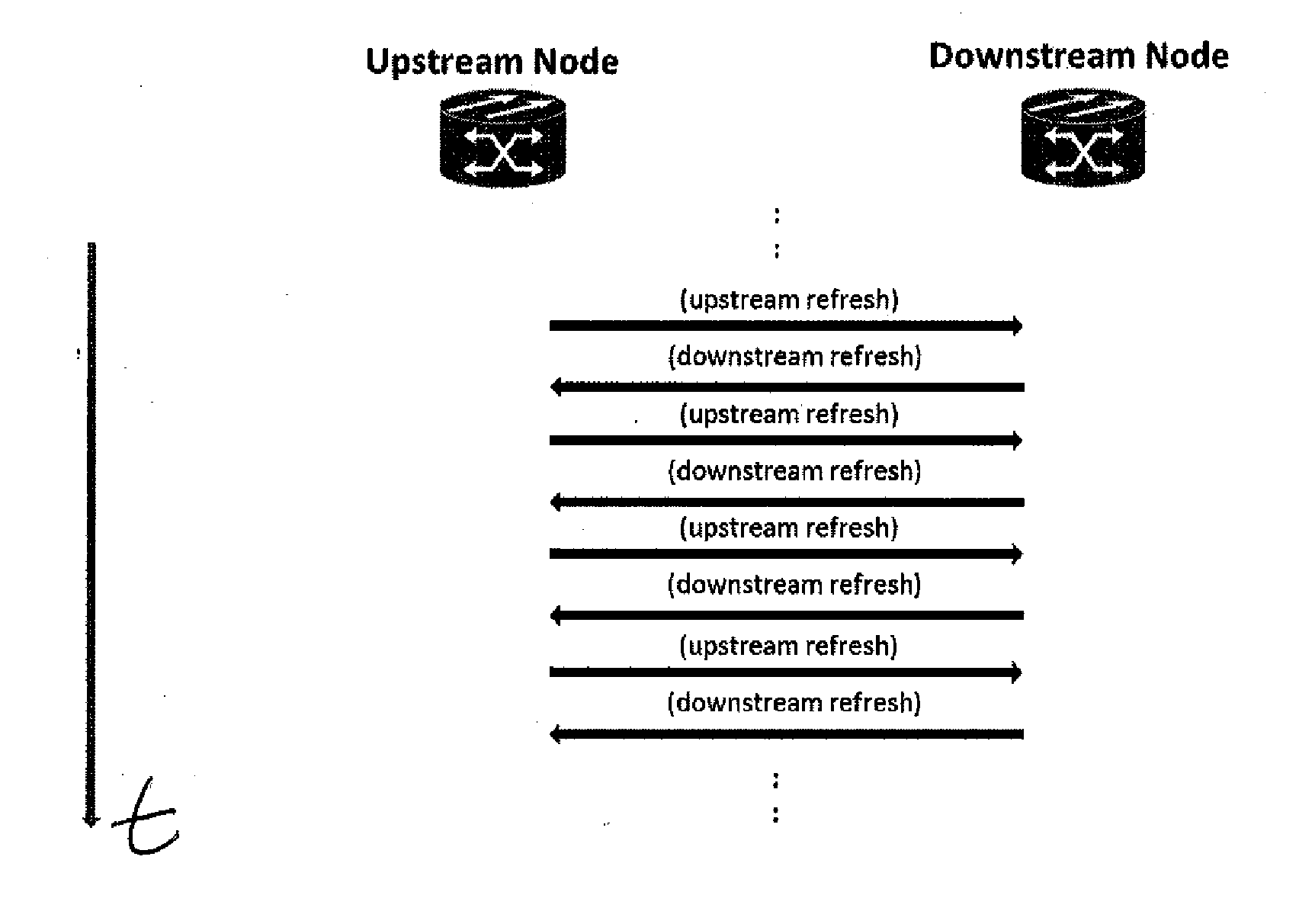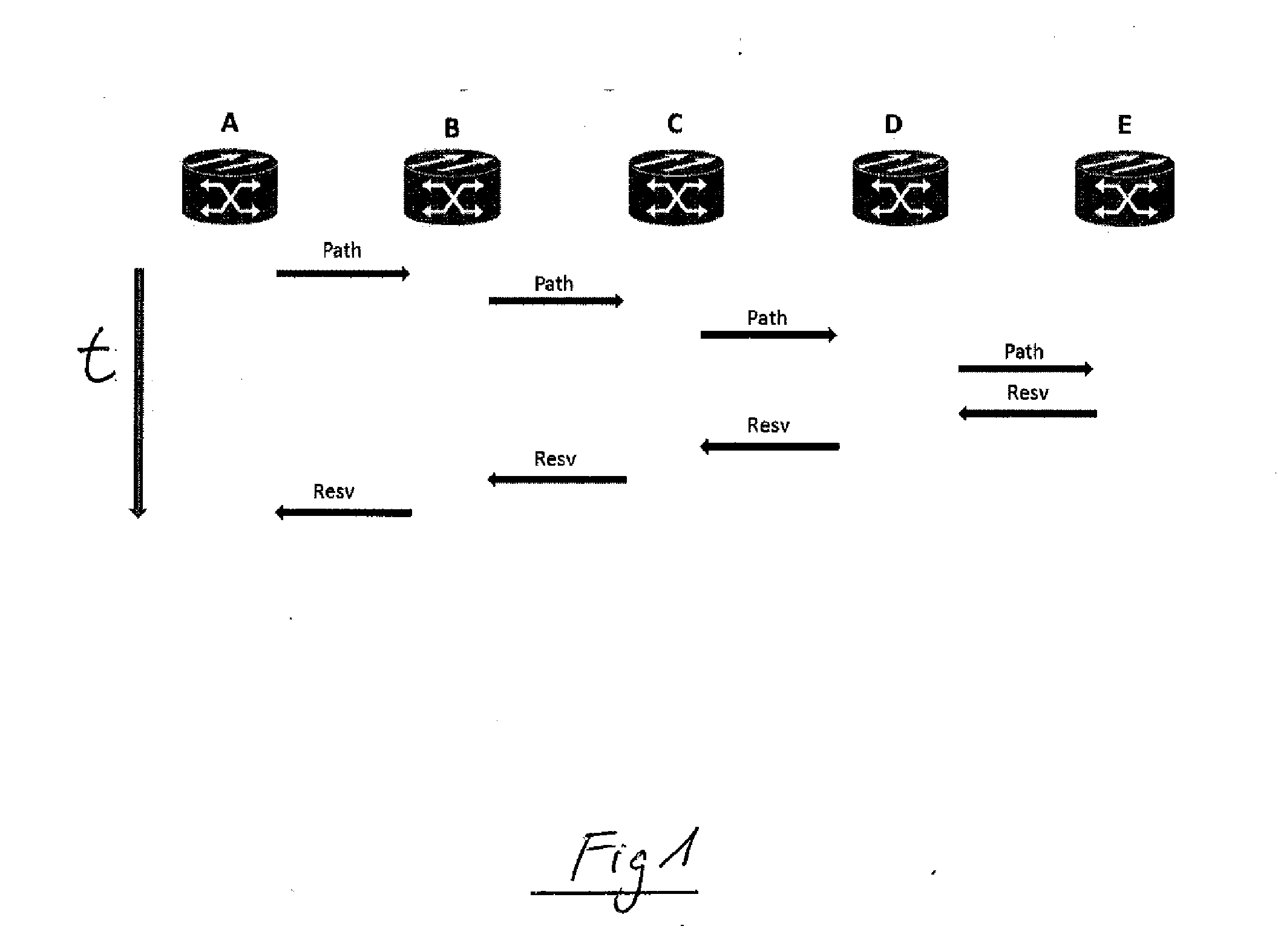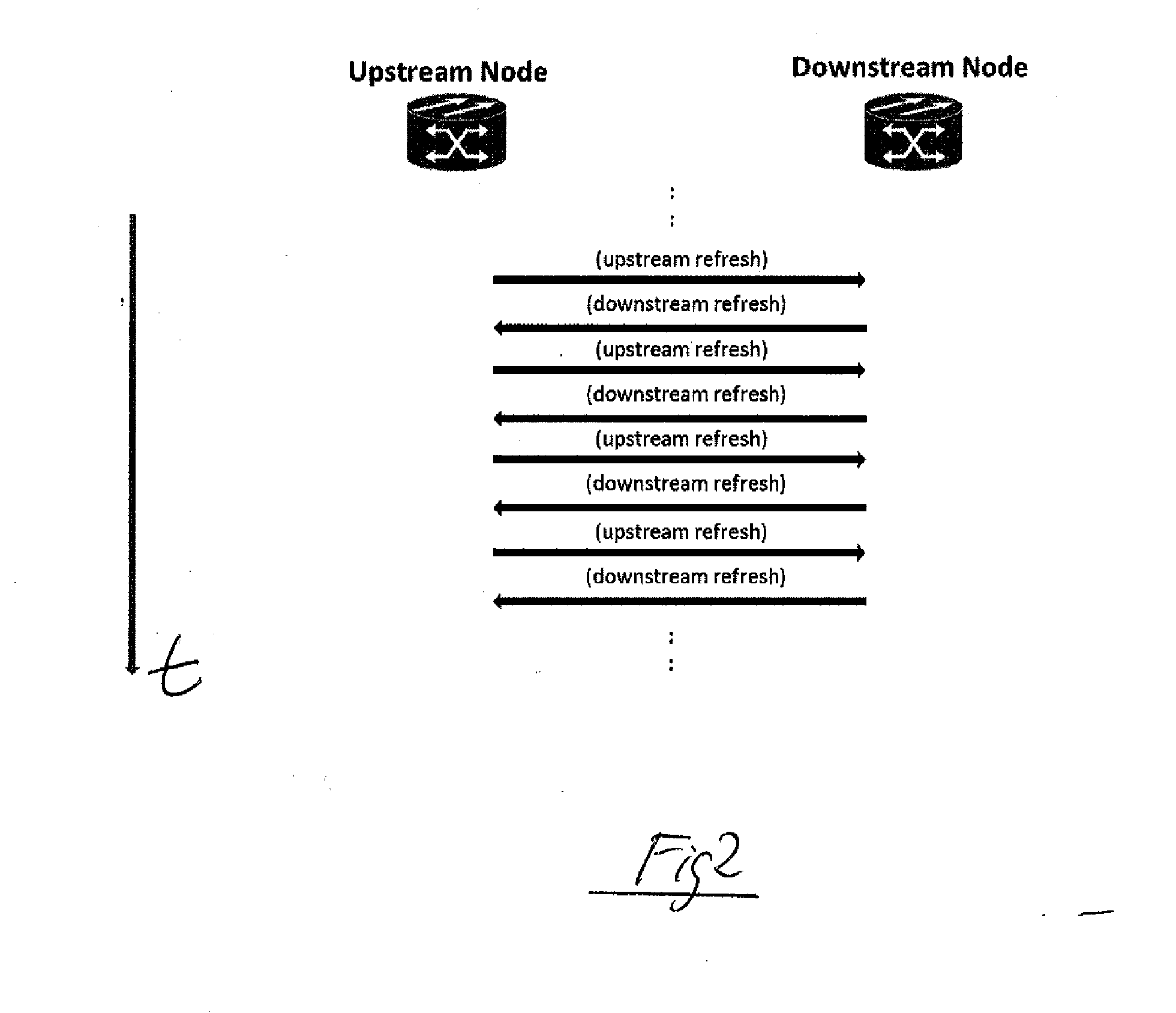Method for managing services in a generalized-multi-protocol label switching, gmpls, controlled network
a technology of generalized multi-protocol label switching and managed services, applied in data switching networks, frequency-division multiplexes, instruments, etc., can solve problems such as problems such as problems such as fig. 3 and the rsvp-te protocol posing some operational disadvantages
- Summary
- Abstract
- Description
- Claims
- Application Information
AI Technical Summary
Benefits of technology
Problems solved by technology
Method used
Image
Examples
Embodiment Construction
[0034]FIG. 5 shows a follow chart of a possible embodiment of a method for managing services in a Generalized-Multi-Protocol Label Switching, GMPLS, controlled network under conditions of a disrupted control plane connectivity. The nodes of said network use a Resource Reservation Protocol with Traffic Engineering extensions, RSVP-TE, to allocate and provision resources of said network. The RSVP-TE protocol is specified in RFC 3209. As can be seen in the flow chart of FIG. 5 the method comprises two steps.
[0035]In a first step S1 a local RSVP Path or Resv state data is evaluated by a sending node having sent at least once a signalling message to a receiving node without receipt of an acknowledgement message from said receiving node within a configurable time to determine an IP address of a node being located after the non-responsive receiving node along a service path of the respective service.
[0036]In a second step S2 the sending node sends the signalling message to the determined I...
PUM
 Login to View More
Login to View More Abstract
Description
Claims
Application Information
 Login to View More
Login to View More - R&D
- Intellectual Property
- Life Sciences
- Materials
- Tech Scout
- Unparalleled Data Quality
- Higher Quality Content
- 60% Fewer Hallucinations
Browse by: Latest US Patents, China's latest patents, Technical Efficacy Thesaurus, Application Domain, Technology Topic, Popular Technical Reports.
© 2025 PatSnap. All rights reserved.Legal|Privacy policy|Modern Slavery Act Transparency Statement|Sitemap|About US| Contact US: help@patsnap.com



